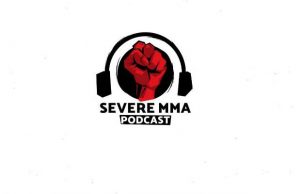

The Irish MMA community gathered en masse in the Royal College of Surgeons (RCSI) on Saturday afternoon for a comprehensive series of lectures on injury prevention and safety.
Supporting the UK and Ireland medical advisory, Safe MMA,
Professor Dan Healy, of the RCSI Neuroscience Society, and SBG Ireland head coach John Kavanagh hosted the event in Dublin’s city centre to emphasise safe training and risk management at all levels of mixed martial arts.
Those in attendance received instruction on subjects including brain damage, nutrition and performance enhancing drugs from some of the UK and Ireland’s leading physicians in their respective fields.
James Walsh, an orthopaedic surgeon at Beaumont hospital, gave a detailed analysis of knee injuries commonly incurred in MMA, including torn ACLs and PCLs. He explained that such injuries were three times more likely to occur in a training environment than in competition.
Gary O’Toole, also an orthopaedic surgeon, spoke about the varying bone breaks and fractures most-likely to befall those competing in MMA. He claimed that matching athletes where there is a disparity in standard greatly increases the chances those particular injuries.
The lecture of Dr Conor O’Brien, a former chairman of the Anti-Doping Committee, encompassed one of the more controversial topics in professional MMA; performance enhancing drugs. He noted that the use of PEDs is, and always has been, inherent to all strata of sport.
Dr O’Brien stressed the need to “tighten up the rules to make your sport more credible.” In no certain terms, he laid out the pitfalls of using chemical enhancements, including death.
John Kavanagh, who worked closely with Professor Healy to organise the event, said that their main goal is to educate those involved in all levels of MMA.
“Today is to give everybody the information and understanding to raise the consciousness level of all the coaches around the country that we’re aware of the dangers and that we make our fighters aware.
“Martial arts is a great way for people to stay in shape, if it’s done correctly. We want to limit the number of head shots people are taking and have them understand when it’s time to take a rest.
“For a lot of guys starting off, it’s about hard training and sparring, but when you get a bit older, you have to realise it’s about the long term and looking after your body.”
With MMA still being a relatively young sport, the long-term effects of fighting at a professional level are yet to fully materialise. However, Kavanagh believes the testament of those who competed in the early days is providing a clearer picture.
“There’s a shift in the consciousness, because we’re probably getting to the end of our first generation of professional fighters, and they’re starting to talk about the problems that they have.”
Like James Walsh, the SBG coach believes that the training mats and not the cage, is where fighters are in most danger. Moreover, he said the days of ‘gym wars’ should be resigned to the past.
“If you’re fighting three or four times a year, it’s probably not the fighting where the damage is done, but in the gym. We’re trying to create an atmosphere where you train to learn, rather than fight to win. It’s the coach’s responsibility and the responsibility of the fighters in there.
“You probably will get tagged in the gym, and your response is what’s important. Are you going to try and hit the guy back harder? Or are you going to be the smart one and take a step back and tell your partner to calm down? When everyone takes that as their responsibility, it doesn’t take long to change the attitude in the gym to one of learning.”
Having served as consultant to some of Ireland’s top fighters, Professor Healy was effusive in his praise for those involved in the top-tier of MMA for making safety a priority.
“This meeting has evolved from the game of MMA. It wouldn’t have happened if those in MMA didn’t want it to happen. There’s a big need for the sport to be normalised now and that will make it safer. Today is an example of the sport self-helping.”
Yet, he went on to say that long-term brain injuries were a distinct possibility for a considerable number fighters who progress to a UFC-level of competition, and that it is the medical profession’s responsibility to advise, not interfere.
“It’s a dangerous sport at professional level. One third of UFC fights end up with one person being knocked unconscious or technically knocked unconscious. One in five professional boxers dement early in life, and I don’t believe it’ll be any different for MMA.
“But it’s far more dangerous if it’s not governed properly. But I don’t see the role of medicine as telling people how to live their lives. I think the role of medicine is to help people do what they want to do safely.”
Other speakers included Mark Ellison, the chief nutritionist for GB Boxing and Manchester United, who provided tips on cutting weight as efficiently as possible, and Professor Barry D Jordan, from New York. Professor Jordan detailed how a brain damage can occur during bouts.
In attendance to lend their support to the cause were UFC fighters Paddy Holohan, Aisling Daly and Brad Pickett.
For more information email Safe MMA at info@safe-mma.co.uk



